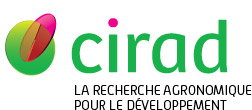Vermeire Marie-Liesse, Cornu Sophie, Fekiacova Zuzana, Detienne Marie, Delvaux Bruno, Cornélis Jean-Thomas. 2016. Rare earth elements dynamics along pedogenesis in a chronosequence of podzolic soils. Chemical Geology, 446 : 163-174.
|
Version publiée
- Anglais
Accès réservé aux personnels Cirad Utilisation soumise à autorisation de l'auteur ou du Cirad. 3-Vermeire et al 2016_chemge.pdf Télécharger (1MB) | Demander une copie |
Quartile : Q1, Sujet : GEOCHEMISTRY & GEOPHYSICS
Résumé : Rare earth elements (REE) total concentration and signature in soils are known to be impacted by successive soil-forming processes. So it can be used as probe of soil processes. However, few studies focus on their behavior in Podzols. Podzols result from the combination of two main pedogenic processes: (1) the strong weathering in the surface eluvial horizon; (2) the downward transfer of dissolved organic matter (OM) and mobile Al and Fe, and their accumulation in the illuvial horizon beneath. Iron oxides and OM are known to have strong affinities with REE, and to play an important role in transfer and immobilization of REE. In order to decipher the relative importance of Fe oxide and OM in REE fate during podzolization, and to investigate whether REE can trace Podzol formation, we study here the evolution of REE signatures along five pedons, aged from 120 to 530 years, in a Cambisol-Podzol chronosequence located in the Cox Bay of Vancouver Island. Our results show that the REE content is strongly correlated to the general loss of elements and mineral weathering. Furthermore, the accumulation of secondary OM, Al and Fe-bearing phases does not impact the REE signature of the bulk soil. Both our results and the ones available in the literature indicate that the release of REE induced by weathering and subsequent leaching in percolating water are the main pathways determining the REE fate in Podzols. Furthermore, we show that REE can be released and mobilized in very short periods of time during podzolization (330 years).
Mots-clés Agrovoc : métal des terres rares, Podzol, teneur en éléments minéraux, technique analytique, lanthanide, scandium, lanthane, yttrium
Mots-clés libres : Lanthanides, Soil evolution rate, Podzolization, Weathering, Secondary phases
Agences de financement hors UE : Fonds De La Recherche Scientifique - FNRS
Projets sur financement : (BEL) FRFC
Auteurs et affiliations
-
Vermeire Marie-Liesse, UCL (BEL)
 ORCID: 0000-0003-2637-0723 - auteur correspondant
ORCID: 0000-0003-2637-0723 - auteur correspondant
- Cornu Sophie, INRA (FRA)
- Fekiacova Zuzana, Aix-Marseille université (FRA)
- Detienne Marie, UCL (BEL)
- Delvaux Bruno, UCL (BEL)
- Cornélis Jean-Thomas, UCL (BEL)
Source : Cirad-Agritrop (https://agritrop.cirad.fr/613730/)
[ Page générée et mise en cache le 2025-07-06 ]




